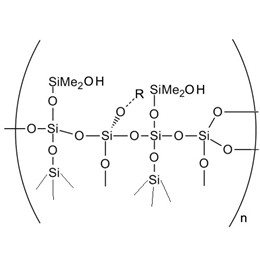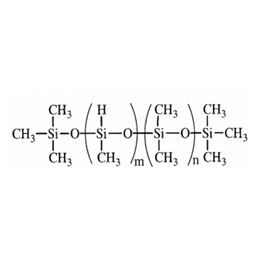Paper industry manufacturers encountered in the papermaking foam, will not only affect the formation of paper, resulting in substandard quality, serious or even damage to equipment, causing accidents. To solve these problems, the paper industry defoamer plays a very big role, why prefer silicone defoamer in paper industry?
Small dosages of silicone defoamers have strong defoaming force in aqueous systems, and are extremely stable, not affecting the basic nature; it has small surface tension, good diffusion and permeability, heat and acid and alkali resistance, oxidation resistance, and high physiological safety. Silicone paper antifoam agent is designed for the paper-making industry, can effectively control foam and improve the quality of papermaking. It is widely used in paper-making system defoaming, and can also be used in paper-making sewage treatment, antifreeze, and distillation system defoaming.
Here will continue to discuss the six aspects of silicone defoamer in the paper industry:
- Why produce foam in the paper industry?
- Why the paper industry needs deforming?
- How to classify defoamers in the paper industry?
- What are the features of silicone defoamer?
- What is the function of silicone defoamer?
- How to make silicone defoamer performance better?
1. Why produce foam in the paper industry?
(1) The foam in the white water of paper mainly comes from many chemical additives added to the pulp pool during the pulping process, such as filter aids, retention aids, wet strength agents, sizing agents, etc., which can easily produce bubbles in the process of pulping and the closed cycle of white water in pulp and paper industry.
(2) As the pulp contains very fine fibers and pigment fillers, etc., these solid substances for the adsorption of bubbles provide a carrier, according to the different fibers, some adsorption on the surface of the fiber, some penetrate the interior of the fiber, and at the same time, fine pigments and fillers can easily be attached to the surface of the bubbles, enhancing the strength of the foam. When the bubble content in the pulp is a lot of bubbles, bubbles are easy to merge, small merged into a large, large bubble due to the density being very small and easy to float on the liquid surface, we usually see the liquid surface foam, compared to the pulp fibers adsorbed on the fine bubbles, the foam on the liquid surface is larger.
![]()
(3) The production of liquid surface foam may also be slurry wash is not clean, fiber wetting and expansion is not complete, the slurry was a waterfall fall, slurry pump air leaks, etc., a large number of air mixed into the water produced by the foam and other factors.
(4) In general, pure water and pure surfactant do not foam, this is because their surface and internal are uniform, it is difficult to form an elastic film, and even if the formation is not stable, it will disappear instantly. However, in the presence of surfactants in solution, after the formation of bubbles, due to the role of intermolecular forces, the hydrophilic and hydrophobic groups in its molecules are adsorbed by the bubble wall, the formation of a regular arrangement of its hydrophilic groups toward the water phase, hydrophobic groups toward the bubble, thus forming an elastic film on the interface of the bubbles, which is very stable and not easy to rupture under normal conditions.
The stability of bubbles is related to surface viscosity and elasticity, electric repulsion, movement of the surface film, temperature, evaporation, and other factors. Furthermore, the bubble and the surface tension of the liquid are inversely related to its tension, the smaller the tension, the more likely to bubble. In life and production, sometimes the emergence of foam, brings people a lot of inconvenience, so it must be defoamed.
2. Why the paper industry needs deforming?
Foam in the paper industry has three forms:
(1) The foam floats on a liquid surface;
(2) The second type of foam is dissolved in the pulp in the air;
(3) The third is adsorbed on the surface of the fiber and the fiber inside the fine foam.
High bubble content in the stock not only affects the net dewatering, resulting in paper disease, reducing machine speed, resulting in paper cuts, and easily making the pump operating efficiency decline, increasing energy consumption, making the entire flow system is not unstable, and even cause the sizing pump tripping and shut down. According to research, the general diameter of less than 0.8mm bubbles often makes the net part of the forming of wet paper bubbles and poor paper uniformity, impedes the combination of fibers, cardboard is easy to delamination, and serious cases of full-width delamination. General research and production experience show that the gas content of the pulp of more than 0.5 ~ 0.6% will have a greater impact on the quality of paper.
![]()
3. How to classify defoamers in the paper industry?
Currently commonly used defoamers are silicone defoamer, polyether defoamer, and so on the market. Among them, the silicone defoamer is the most widely used in the paper industry, and its main features are excellent defoaming effect, non-volatile, good stability, and no effect on the paper in aqueous systems.
(1) Kerosene defoamer
Kerosene antifoam agents can only eliminate foam on the surface of the water, have poor ability to remove gas in the pulp, and also affect the sizing, so that the finished paper with kerosene odor, can only be used for corrugated paper and other low-grade paper.
(2) Oil ester defoamers
Oil ester defoamer can only eliminate surface foam, the degassing effect is poor, and also affects the sizing, and the use of higher prices;
(3) Polyether defoamer
Polyether antifoam agent is easily affected by the temperature, white water temperature is different at the same time, and its defoaming and degassing effect is a big difference.
(4) Silicone defoamer
Silicone defoamer is a common antifoam agent, mainly to control foam generated in the liquid, by changing the surface tension and interfacial tension of the liquid, so that the foam film is destroyed, to achieve rapid defoaming, foam suppression effect, often widely used in water treatment, papermaking, metalworking fluids, coatings, chemical and other industries.
![]()
The existence of foam will make product quality and production and construction process and so on will produce greater harm, to maintain the production of the industry and the normal operation of the construction process, the need to choose the appropriate antifoam agent to eliminate these negative effects, which silicone defoamers for the development of the industry has played a great role in promoting.
XJY-8205 Powder Methyl MQ Silicone Resin is a solid powdered resin. This resin provides excellent transfer resistance and water resistance and also forms a long-lasting film that can be used as silicone defoamers in aqueous systems.

XJY-702 Methylhydrosiloxane/Dimethylsiloxane Copolymer is non-toxic and odorless, has active groups, and under the action of catalysts, it can react with double bonds, hydroxyls, and other groups, and is the basic raw material for products such as leveling agents and silicone defoamers in the petroleum industry, metalworking fluids, pulp and paper industry and other industrial applications.

4. What are the features of silicone defoamer?
(1) It has low surface tension, good dispersibility, and fast defoaming speed, can effectively control foam, and its high defoaming effect can avoid pulp overflow and improve the quality of paper.
(2) As the defoamer is non-toxic and environmentally friendly, it will not harm the human body, which is conducive to production safety, and the unique foam suppression effect is more conducive to white water discharge.
(3) It has extremely stable performance, fast defoaming speed, long foam suppression time, and no toxicity to sewage microorganisms, do not change the performance of sewage COD, or BOD.
(4) When the temperature of the foaming system is higher than 60 ℃, it is recommended to add a defoamer before reaching 60 ℃, so that it can play a good role in defoaming.
(5) The wastewater system factors generated by different paper-making processes are different. The specific dosage should be determined according to the site conditions, and the most appropriate dose should be selected by experiment.
5. What is the function of the silicone defoamer?
Paper mills need to add a large number of pulp, additives, and other auxiliary production in the papermaking process, which has a very complex production process. This process will produce a large number of foam, foam mainly from the pulping process to the pulp pool in the addition of many chemical additives, they are in the pulping and white water closed loop process which makes it easy to produce bubbles and food applications. Between this foam problem, to maintain the quality of paper, many paper manufacturers will add paper silicone defoamers in pulp and paper production.
Silicone defoamer is mainly potassium hydroxide catalyzed, with propylene glycol or glycerol and propylene oxide, ethylene oxide, and other polymerization of antifoam agents. It has good performances such as fast defoaming, strong stability, no color spots, and other advantages, and is suitable for most of the silicone antifoam agent industry for defoaming and foam inhibition needs.
The silicone defoamers agent's main function is to remove the foam on the liquid surface of the process medium, thereby improving filtration, washing, extraction, distillation, evaporation, dehydration, drying, and other processes of separation, gasification, and discharge effects, to ensure that all types of materials and processing containers to make full use of the capacity.
In the specific pulp and paper paper industry, silicone defoamer is widely used in pulping, coated paper processing, and paper wastewater treatment. Because of its low surface tension, high stability high-temperature resistance, and other characteristics, the silicone defoamer has a good effect on the control and elimination of foam in the liquid.
![]()
6. How to make silicone defoamer performance better?
Silicone based defoamers are a kind of additive, whose function is to eliminate the foam formed by materials in the production process, silicone antifoam agents is one of the application industry is very wide in industrial applications, water treatment, chemical industry, papermaking, paints coatings, food processing, petroleum industry, metalworking fluids, textile, and many other industrial sectors, silicone defoamers have become a kind of indispensable additives in the production process. How to improve the competitiveness of your products?
XJY Silicones is one of the leading silicone MQ resin and VMQ silicone manufacturers in China, with more than 30 years of R&D and manufacturing experience in the silicone industry as well as more than 15 related patents and technical support. Our silicone raw materials can meet the needs of the paper industry and support the provision of diversified customized solutions.


